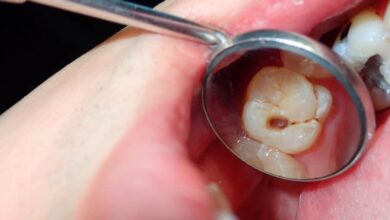Wisdom Teeth X-Ray: What you need to Know

Table of Contents
Wisdom Teeth X-Ray: A Comprehensive Insight into the Examination
Wisdom teeth, also known as third molars, are the final set of teeth to develop in the human mouth. They usually emerge during the late teens or early twenties, a time when individuals are considered wiser and more mature. However, the irony lies in the fact that these teeth often cause more trouble than wisdom. lols
Due to their late eruption and limited space in the jaw, wisdom teeth frequently encounter complications, leading to pain, infections, and other oral health issues. To evaluate the position and condition of wisdom teeth, dental professionals rely on a diagnostic tool called a wisdom teeth X-ray. In this comprehensive article, we will delve into the details of wisdom teeth X-rays, exploring their purpose, procedure, benefits, and potential risks.
The Purpose of Wisdom Teeth X-Rays
The primary objective of wisdom teeth X-rays is to obtain a clear and detailed image of the third molars. These X-rays aid dental professionals in assessing the position, alignment, and growth stage of wisdom teeth. By examining the X-ray, dentists can determine whether the wisdom teeth are impacted (unable to fully emerge from the gum line), misaligned, or pose a potential threat to adjacent teeth or surrounding structures. The information obtained from the X-ray helps dentists develop an appropriate treatment plan, which may involve wisdom tooth extraction or monitoring their progress over time.
Types of Wisdom Teeth X-Rays
Several types of X-rays can be used to examine wisdom teeth, depending on the specific requirements of the case. The most common types include:
1. Panoramic X-ray:
This is the most frequently used technique for assessing wisdom teeth. A panoramic X-ray provides a broad overview of the entire mouth, including the jaw, teeth, and surrounding structures. It captures a single image that reveals the positions and conditions of all four wisdom teeth simultaneously.
2. Periapical X-ray:
This type of X-ray focuses on a specific tooth or a group of teeth. In the case of wisdom teeth, periapical X-rays are useful for capturing detailed images of individual molars, allowing dentists to assess their root structure, proximity to adjacent teeth, and any signs of infection or decay.
3. Cone Beam Computed Tomography (CBCT):
CBCT is a three-dimensional imaging technique that provides a comprehensive view of oral structures, including wisdom teeth. It offers detailed cross-sectional images, which are particularly useful in complex cases involving impacted or severely misaligned wisdom teeth.
Procedure for Wisdom Teeth X-Rays
The procedure for wisdom teeth X-rays is relatively simple and straightforward. It involves the following steps:
- Preparation: Before the X-ray examination, the dental professional will ensure that the patient removes any jewelry, eyeglasses, or other metal objects that may interfere with the imaging process.
- Positioning: The patient is positioned in front of the X-ray machine, while the dental professional places a lead apron on the patient’s body to protect against unnecessary radiation exposure.
- X-ray Machine Adjustment: Depending on the type of X-ray being performed, the dental professional may adjust the machine accordingly. For panoramic X-rays, the patient bites down on a specialized film holder while the machine rotates around the head. Periapical X-rays involve placing a small film packet inside the mouth, adjacent to the targeted tooth or teeth. CBCT requires the patient to sit or stand still while the machine rotates around the head, capturing multiple images.
- Image Capture: Once the patient is correctly positioned, the dental professional activates the X-ray machine, which emits a small dose of radiation for a brief moment. The X-ray film or digital sensor captures the image, which is then processed for interpretation.
Watch the video below for the Wisdom Teeth X-Ray procedure
Benefits of Wisdom Teeth X-Rays
Wisdom teeth X-rays offer several benefits in the diagnosis and treatment planning of third molars. These include:
1. Accurate Assessment:
X-rays provide detailed images that allow dental professionals to accurately assess the position, alignment, and condition of wisdom teeth. This assessment is crucial in determining whether wisdom teeth need extraction or can be monitored.
2. Early Detection:
X-rays enable early detection of potential complications associated with wisdom teeth, such as impacted teeth, infections, cysts, or tumors. Early detection allows for timely intervention, preventing further oral health issues.
3. Treatment Planning:
The information obtained from wisdom teeth X-rays helps dentists develop a personalized treatment plan tailored to the patient’s specific needs. Whether it involves extraction, monitoring, or other interventions, the treatment plan aims to maintain optimal oral health.
Risks and Precautions
While wisdom teeth X-rays are generally safe, it is essential to consider the potential risks and take necessary precautions:
1. Radiation Exposure:
X-rays involve a small amount of radiation. Although the dosage is low, repeated exposure can have cumulative effects. To minimize radiation exposure, lead aprons are used to shield the body, and the dental professional ensures that the X-ray equipment is properly calibrated for optimal image quality and reduced radiation emission.
2. Pregnancy:
Pregnant women should avoid X-rays whenever possible, as radiation can potentially harm the developing fetus. If absolutely necessary, the dental professional should take extra precautions to minimize radiation exposure and only perform the X-ray after consulting with the patient’s obstetrician.
Conclusion
Wisdom teeth X-rays play a critical role in assessing the position, alignment, and condition of the third molars. By providing detailed images, these X-rays aid dental professionals in developing appropriate treatment plans to address any potential complications.
Through techniques such as panoramic X-rays, periapical X-rays, and cone beam computed tomography, dentists can accurately diagnose and evaluate the status of wisdom teeth. While there are potential risks associated with radiation exposure, the benefits of wisdom teeth X-rays, such as early detection and personalized treatment planning, outweigh the risks when proper precautions are taken.
If you suspect any issues with your wisdom teeth, consulting with a dental professional and undergoing a wisdom teeth X-ray can provide valuable insights to guide your oral health journey.
Also, Read:
- Wisdom Teeth X-Ray: What you need to Know
- Sideways Wisdom Teeth: Causes, Pros, and Cons
- The Benefits of Keeping Wisdom Teeth: Debunking Common Myths
- Sore throat after wisdom teeth removal
- How to Reduce Swelling After Wisdom Teeth Removal
- What happens if you don’t get your wisdom teeth removed?
- Can wisdom teeth cause headaches? 3 ways!
- Everything you need to know about the Wisdom Teeth




